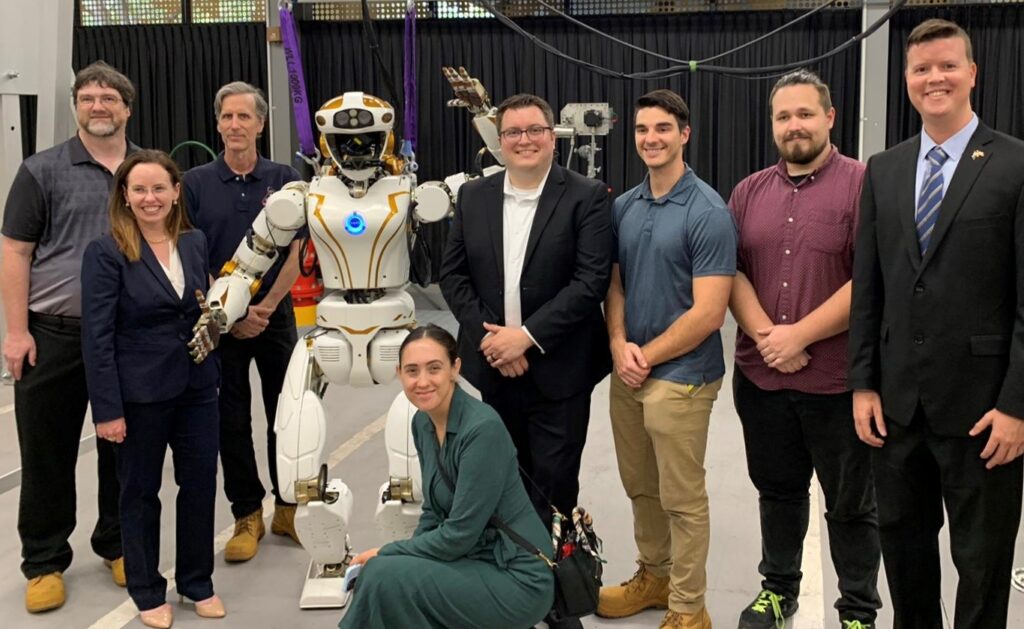
NASA’s Valkyrie humanoid robot has been transported to Woodside Energy in Perth, Western Australia, to undergo testing.
NASA plans to use a Valkyrie robot to develop remote mobile dexterous-manipulation capabilities to accommodate remote caretaking of uncrewed and offshore energy facilities. Woodside Energy will test the resulting software and provide data and feedback to NASA, helping to accelerate the maturation of robotic technology.
Under the collaboration, Valkyrie will advance robotic remote-operations capabilities that have potential to improve the efficiency of Woodside’s offshore and remote operations, while also increasing safety for both the company’s personnel and the environment. In addition, the new capabilities may have applications for NASA’s Artemis missions and for other Earth-based robotics objectives.
NASA plans to use the experience gained while operating Valkyrie in Woodside’s facilities to learn how to better design robots for work in dirty and hazardous conditions similar those found on the Moon at the long-term worksites and habitats that will be established as part of future Artemis missions.
Remotely operated mobile robots on the lunar and Martian surface could enable Earth-based operators to conduct important activities, even when astronauts aren’t physically present. These activities include inspection and maintenance of infrastructure and plants that leverage resources and materials to produce new items, enabling astronauts to live off the land. Woodside’s testing will provide valuable data for NASA engineers on the use of advanced robots in similar terrestrial applications.

‘We are pleased to be starting the next phase of development and testing of advanced robotic systems that have the potential to positively impact life on Earth by allowing safer operations in hazardous environments,’ said Shaun Azimi, lead of the dexterous robotics team at NASA’s Johnson Space Center in Houston. ‘These demonstrations will evaluate the current potential of advanced robots to extend the reach of humans and help humanity explore and work safely anywhere.’
Valkyrie and other advanced mobile robots have the potential to be vital tools in allowing humans to supervise dangerous work remotely and to offload dull and repetitive tasks, enabling humans to work on higher-level tasks, including deploying and maintaining robots. These principles apply to both space and Earth, where companies are recognising the value of human-scale robots.
According to NASA, supporting Valkyrie’s development on Earth will create data and provide solutions that NASA teams will apply to current and future robotics and automation development for use in space. NASA will apply the software-development work done on Valkyrie to upcoming hardware releases and perform operational demonstrations with Woodside to prove the robot’s capabilities in relevant remote operational settings.


